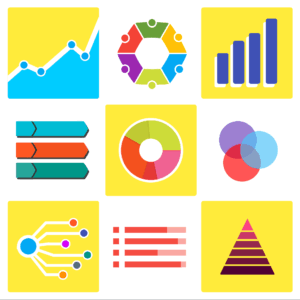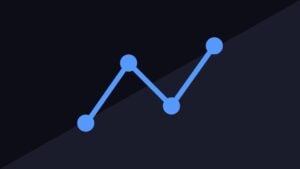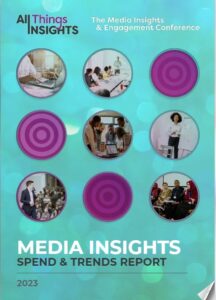Leveraging New AI Tools
Any discussion around the future of human insights, ironically, circles back to the advancements made in AI. But for Yogesh Chavda, Director, Center for Marketing Solutions, University of South Carolina, the consumer will always remain as the point of focus.
“From a consumer perspective, AI is still very new for everyone,” says Chavda. “There are a lot of people who dabble with it. But eventually, this will continue to grow, as these large language models become more accessible, and they do things that people understand. How consumers search, how they make their decision-making process for buying products, all that’s about to change in the next five years. Brands are going to start integrating AI into their path to purchase and their consumer journey mapping. This will then impact how and where ads show up, and how they will drive conversion rates. As far as the consumer insights professional, AI tools will help automate a bunch of their daily tasks. It’ll make them a lot more efficient. That’s already happening today.”
For Gabriel Dorosz, Founder and Principal of Mighty Blackbird, a consultancy focused on building a better media and advertising ecosystem for publishers, brands and audiences, AI will remain a game changer. But the human perspective is not lost, just perhaps finding its footing in this new era.
Dorosz, who is formerly Head of Insights for New York Times Advertising, notes, “As others have said, the human lens remains singularly unique and will be impossible for AI and LLMs to replicate for quite some time. I see AI more as a really valuable thought partner and less as something that’s replacing my thinking or my process.”
To that end, AI has its strengths during the process of the insights journey.
“I find AI invaluable in the idea generation process and especially in the data synthesis process where its benefits are extraordinary,” says Dorosz. “You do have to find the right way to integrate into your own way of working and create a QA process around it, but its power is extraordinary and constantly evolving. Obviously doing more with less has positive and negative implications for careers, but it’s here and I think the best strategy is to find a way to maximize both the value it brings and your own unique perspectives as a practitioner—those two things combined are incredibly powerful.”
Dorosz hits on a key point about maximizing the value of AI, which Chavda also elaborates upon.
Chavda notes, “The part that very few people are talking about is what’s the value that’s associated with using AI tools. It’s not only efficiency, but there’s also a value component to it. That’s the part that I see is not completely articulated as much yet by vendors and clients. I hear all the time from market researchers—if this gets automated, we’ll spend more time talking about strategy. Wait a minute, are you going to compete against the C-suite in strategy? Are you going to compete against the strategy department with strategy? That’s a non-starter.”
He continues, “You must think about what your role is and how do you redefine your role where you’re actually showcasing value. When we think about changing consumer behaviors, how are you to incorporate digital twins? You can reflect that in terms of consumer behavior, and then you can simulate that, and you can test different things prior to launch. You are the only one who’s positioned to do that. What about simulation tools? Can you build what-if scenario tools that allows you to say, for example, tariffs are happening. We were planning for a ten percent increase, but what happens if it’s 50% or 100%? How far did people plan in terms of the impact? What were the tools available to do that?”
A recent client case study leveraged AI: “I had a client where we used my custom GPT agent on scenario planning to help them think about the future and tariffs,” Chavda says. “And I built out four different scenarios, transformation, growth, constraint, and collapse. They believed it was going to be the constraint scenario because of the tariffs. I talked to the VP of marketing, and he said, I’m so glad we did that work because right now we believe it’s not the constraint scenario. We’re actually in the collapse scenario right now. Wow. But because we had thought about that direction, we were already thinking about ‘what could happen if’ but we would have not gotten that far had we not done that work with AI.”
Chavda asserts, “Those are areas that we can bring unique skill sets with, but it’s not based on methodology. It’s not based on qual, quant. This is about a whole new level of tools, building a whole new set of tools and toolkit that quite frankly doesn’t exist right now. But we have to push on the client side from our vendors to build those tools for us.”
The Insights Relevancy Debate
Consumer behaviors are changing. This is a big opportunity for the insights professional to help companies understand and manage this consumer behavior. AI is evolving, giving insights new muscles to energize their work with. But it’s not so simple. What’s up for debate nowadays in the insights world?
“There is a worry,” says Chavda. “There is a worry with AI about the relevancy of the insights department in its entirety. Is it common? Not yet. But if we don’t manage the situation proactively now, it’s going to be a common conversation because companies will start out downsizing as a consequence.”
Dorosz, meanwhile, sees a lot of discussion and debate ahead when it comes to new AI tools. Take synthetic data, for example.
“I think we’ll see a lot of continued discussion and debate around when, how, how much, and how transparent to be about using synthetic data and especially synthetic respondents,” says Dorosz. “In some highly scaled insights departments I think you’ll increasingly see more and more use of synthetic respondents given the efficiencies available to tap into. If the research practitioners are human and the training data is human and the output is applied to decisions that affect people, is that not also human insight? I think we’ll rightfully continue to see discussion and debate around that.”
Chavda, too, sees larger companies with larger insights departments in particular leveraging tech and at least experimenting. “They’re the ones who are actually thinking through clearly or playing around with how we actually incorporate the right kind of tech—which informs and increases their productivity as insights professionals,” he says. “That’s happening. You can go do a lot of experimentation. But at the same time, you better be clear on your strategy as well because you could potentially be sending your entire organization down multiple rabbit holes, and that’s not helpful either.”
Being clear on your strategy then becomes extremely relevant.
Chavda adds, “For insights professionals, because they are three or four steps removed from revenue growth or profit growth or market share growth, they have to think through in the context of their company, how will AI help them actually get one or two steps closer to revenue growth? The more they do that, the more valuable they become to the organization as a consequence.”
Speeding into the Future of Business
What’s on the horizon? Nobody can predict the future, but the next era of insights seems full of potential, and risk. But human insights will remain a valued entity in the world of marketing and business.
“There are enough signals right now that are becoming more and more apparent, at least to me, that companies that are focusing on just bolting on an AI solution, on existing workflows, it’ll work for a while. But at some point, they’re going to sit back and say, is this all working really or not? This will be a reevaluation of that entire strategy,” says Chavda.
He adds, “What I believe is going to end up happening is that there’ll be more of a push to drive what’s called AI native models, where you start with AI and then you build your workflow around that. Not within the function and across functions. That’s where agentic models become suddenly really interesting. You can have horizontal, vertical, and then the third one is a cross linking. Where you could literally build a workflow, where you have specialized AI agents that are talking to each other all the way from insights to brand to design to packaging to legal.”
Dorosz also predicts that AI agents could be the wave of the future. “As agentic AI becomes more sophisticated and practitioners become more adept at designing, deploying and connecting agents to process, tools and other data sources, I think we’ll certainly see more and more evolution in terms of available toolkits for practitioners—and more expectations in terms of accelerated time-to-market,” says Dorosz.
He adds, “But on the flipside, I think fraud will become more and more difficult to detect and isolate. But that’s true of all fields. And I’m a bit of an optimist in this regard—as it becomes easier and easier to get to ‘pretty good’ insights with AI and automation, singularly unique and actionable human insights will become even more valuable.”
Chavda adds, “There’s a huge opportunity right now for the insights industry to step up, and they have to break past their own silos and think more broadly than just the silo. They have to think about what their role is in driving the revenue growth for their company. If they are not able to articulate that clearly, then they have a lot more work to do in terms of figuring out what is the value of their role and how do they actually do that, and how do they use the tech to help support that.”
“Quite frankly, this means that they have to think past methodology,” says Chavda. “They have to think past silos. They have to think past the puristic mindset, and they have to think about being pragmatically focused as business leaders. You are business leaders with an expertise in research or insights, but that doesn’t mean you’re not a business leader at the end of the day. You are. That’s sometimes forgotten.”
Related Stories in the Human Insight series:
• “Human Insights: Understanding People to Drive Impact”
• “Beyond Algorithms: Reclaiming Human-Centricity”
• “The Human Element: Navigating the AI Revolution”
Video courtesy of StrategyCast
Contributor
-

Matthew Kramer is the Digital Editor for All Things Insights & All Things Innovation. He has over 20 years of experience working in publishing and media companies, on a variety of business-to-business publications, websites and trade shows.
View all posts

























































































































































































































































